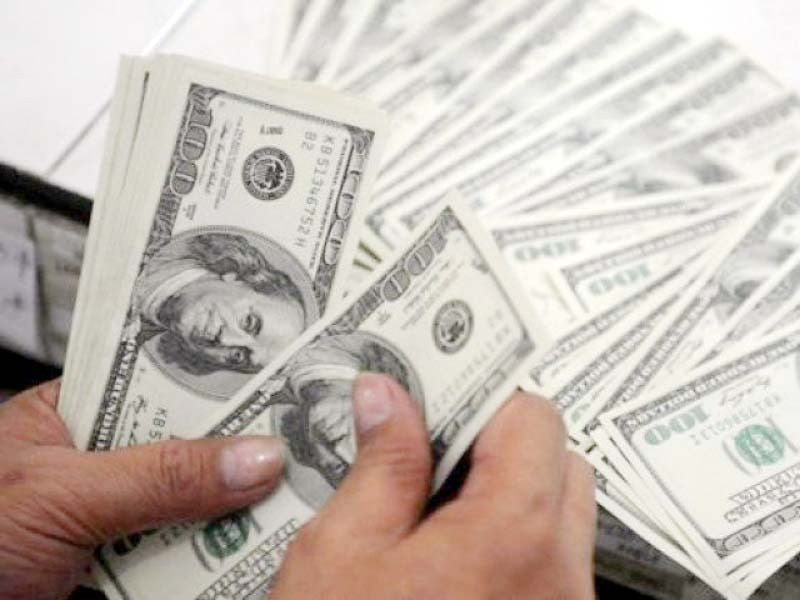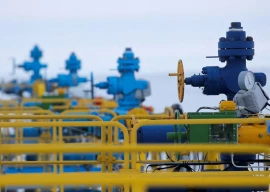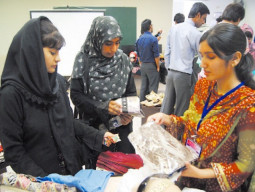
As Pakistan begins seeking commercial loans from Middle Eastern banks to bridge a $2 billion external financing gap, the government informed a Senate panel on Thursday that the cost of borrowing from the International Monetary Fund (IMF) has exceeded 5%, making it an expensive option.
On Thursday, Finance Minister Muhammad Aurangzeb reached out to Dubai Islamic Bank, requesting a commercial loan. This marked his second meeting with a Gulf bank in one week, following an earlier meeting with Mashreq Bank for financing.
In a virtual meeting with Dr Adnan Chilwan, Group CEO of Dubai Islamic Bank, Aurangzeb discussed Pakistan's economic trajectory and explored potential avenues for increased investment in the country, according to the finance ministry. Dr Chilwan expressed the bank's interest in playing a larger role in Pakistan's financial growth, particularly in sectors such as Islamic banking, infrastructure, and SMEs development.
The finance minister invited Dubai Islamic Bank to enhance its investments in Pakistan and reaffirmed the government's commitment to maintaining a stable macroeconomic environment and implementing all necessary measures to facilitate foreign investment, said the finance ministry. Following these initial meetings by the finance minister, bureaucrats from the finance ministry's Q Block are scheduled to sit down with foreign bankers next week to discuss loan amounts and interest rates.
On August 6th, Aurangzeb had revealed that the government received a commercial loan offer from a European bank but was awaiting IMF board approval to secure lower interest rates. The European bank had offered double-digit interest rates, which were deemed politically and economically unfeasible. However, the IMF indefinitely postponed the approval of a $7 billion Extended Fund Facility (EFF) this week after Pakistan failed to secure the additional $2 billion in financing and the rollover of $12 billion in cash deposits from Saudi Arabia, China, and the UAE.
The finance minister now hopes that the IMF may approve the new EFF in September. Despite the delays, Pakistan's foreign exchange reserves currently stand at $9.3 billion, bolstered by significant purchases from the domestic market by the central bank.
Pakistan has intensified its engagement with foreign commercial banks, though high financing costs and a low credit rating from international agencies remain significant hurdles.
Sources indicate that Dubai Islamic Bank has expressed interest in providing syndicated financing facilities to Pakistan. The bank also referenced the IMF programme, as foreign lenders are closely monitoring whether the IMF extends its support to Pakistan. Pakistan's current credit rating stands at CCC+, which is below investment grade, leading to higher interest rate demands from commercial banks. However, the finance minister remains optimistic that international credit rating agencies may upgrade Pakistan to investment grade by the next fiscal year.
Meanwhile, on Thursday, the Ministry of Finance and the State Bank of Pakistan (SBP) briefed the Senate Standing Committee on Economic Affairs about Pakistan's engagements with the IMF since 1958.
Qader Bakhsh, an executive from the SBP, informed the parliamentary forum that Pakistan's last Stand-By Arrangement with the IMF had an average interest rate of 5.1%, making it a costly deal. He also noted that the new IMF loan is expected to carry similar rates unless global interest rates decline. The IMF interest rate is determined by the Special Drawing Rights (SDR) basket price, plus a 1% base rate and two additional surcharges linked to loan volume and duration, he explained. The SBP official further detailed that if a country borrows more than 187.5% of its IMF quota, a 2% surcharge applies. Additionally, a 1% surcharge is levied if the borrowing period exceeds three years, he said.
Traditionally, lending by the World Bank, the Asian Development Bank, and the IMF was considered affordable. However, due to Pakistan's increasing borrowing needs and limited capacity to sustain such debt, the WB and ADB have also raised their interest rates.
Data shared by the finance ministry revealed that Pakistan's interest costs on IMF loans have steadily risen since 2008. That year, Pakistan borrowed from the IMF at an interest rate of 1.6%, which increased to 2.4% in 2013. The 2019 IMF programme was secured at an average interest rate of 3.41%, according to the ministry.
Maryum Kayani, Joint Secretary at the Ministry of Finance responsible for IMF affairs, stated that since 1958, Pakistan has entered into 24 IMF programmes and four special one-time facilities. Under these 28 agreements, Pakistan signed loans worth 28.3 billion SDRs (approximately $40.5 billion), of which it received 21.3 billion SDRs (about $28.6 billion), with the remaining amounts undisbursed.
Contrary to popular belief that Pakistan has only completed two of its 24 IMF programmes, the finance ministry informed the standing committee that the country has actually completed nine programmes. These include programmes from 1965-66, 1968-69, 1973-74, 1974-75, 1977-78, 1988-90, 2000-01, 2013-16, and 2023-24.

1724760612-0/Untitled-design-(12)1724760612-0-405x300.webp)
















COMMENTS
Comments are moderated and generally will be posted if they are on-topic and not abusive.
For more information, please see our Comments FAQ